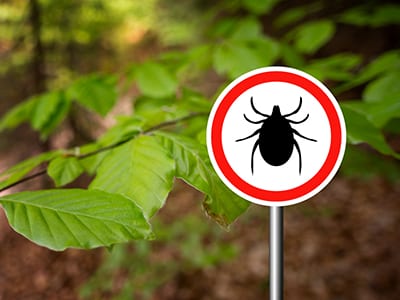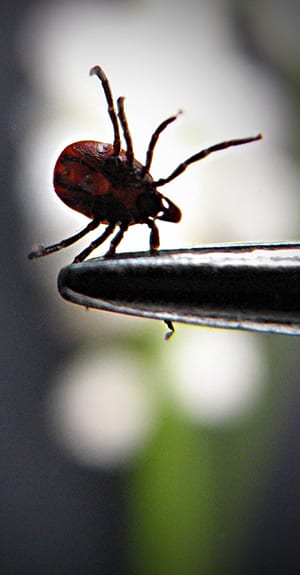Cat and Dog Tick Prevention in Greenwood is Important
Ticks are bloodsucking external parasites that attach to dogs and cats and can feed for up to 3 or 4 days if left untouched. These critters are not only a creepy nuisance, but they can also transmit serious diseases including Lyme disease, ehrlichiosis, anaplasmosis, and Rocky Mountain spotted fever to both us and our pets. To help our furry families stay safe, it’s important to know about tick prevention for dogs and cats.

Preventing Tick Bites
Luckily, there are several precautions we can all take to prevent tick bites.
- Avoid tick-infested areas, especially during the prime tick season which usually runs from late April through July in central Indiana. If you do venture into tick-infested areas, make sure your pet is up to date on their parasite preventives. Protect yourself by wearing light-colored, long clothing, making sure to tuck your pants into your boots, and your shirt into your pants.
- Always thoroughly check your pet and yourself after being outdoors. Ticks can remain on a host for several hours before attaching, so checking for ticks as soon as possible could prevent a bite.
- Keep your pet’s tick control products up to date, even if they are an indoor-only pet. You can easily bring ticks into your home on your clothing after you’ve been outdoors, putting your pet at risk.
- Clear your yard of tick-friendly environments such as piles of leaf litter or grass cuttings.
- Mow your lawn to keep it trimmed and remove brush or tall grass from around your yard.
- Use pesticides if your yard has a tick problem, but be sure to follow the directions precisely. Your pet’s exposure to these chemicals could cause illness.

Proper Removal of Ticks
To remove a tick from your dog or cat, follow these steps.
- Put on rubber or latex gloves to avoid direct exposure to the tick.
- Get a jar in which to place the tick after removal.
- Use tweezers to grasp the tick as close to your pet’s skin as possible. Be sure to grasp the tick from the side, rather than over the body (which could result in a crushed tick).
- Pull straight upwards with gentle, yet steady pressure. Do not jerk or twist the tick. This could cause the mouthparts to break off and remain in your pet’s skin.
- Promptly clean the bite site with disinfectant and wash your hands in soap and water. Don’t forget to also sterilize your tweezers.
- Be sure to monitor the bite site to watch for signs of infection. Also, pay attention to your pet in the coming months and watch for changes in behavior or health that could suggest a contraction of a tick-borne illness. Contact your veterinarian if your pet has any symptoms!
Have any questions about tick protection? Contact our animal hospital at (317) 851-5000 and we’ll be happy to help!

"Great place!!!!! Would recommend to anyone!!! They care about your fur animals and are truly there to help."
-Jaime Z.
